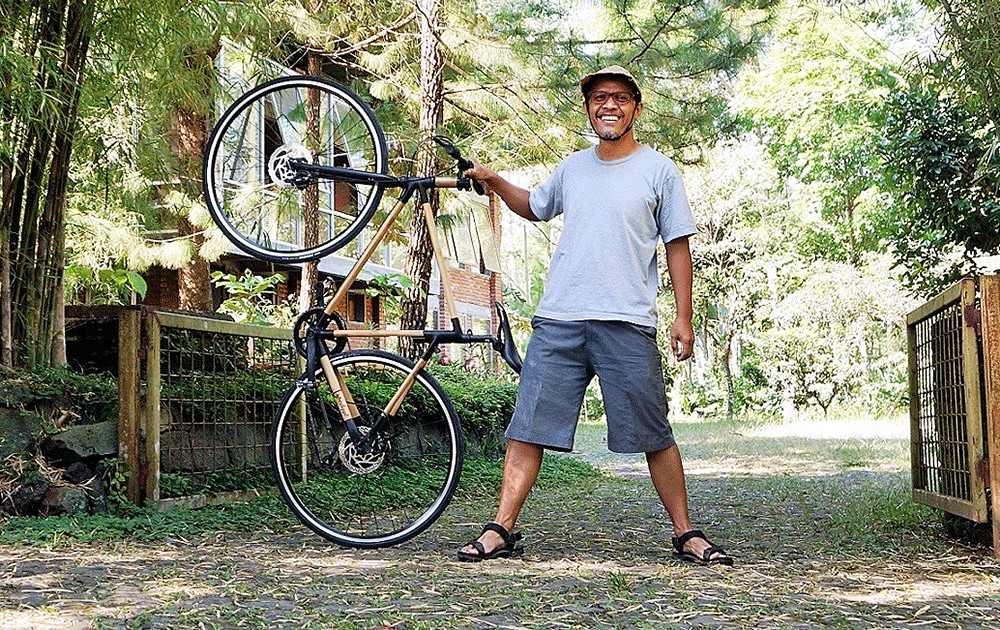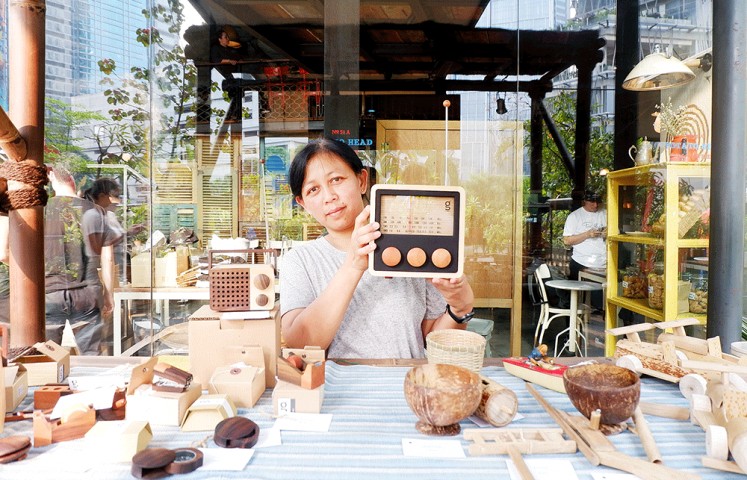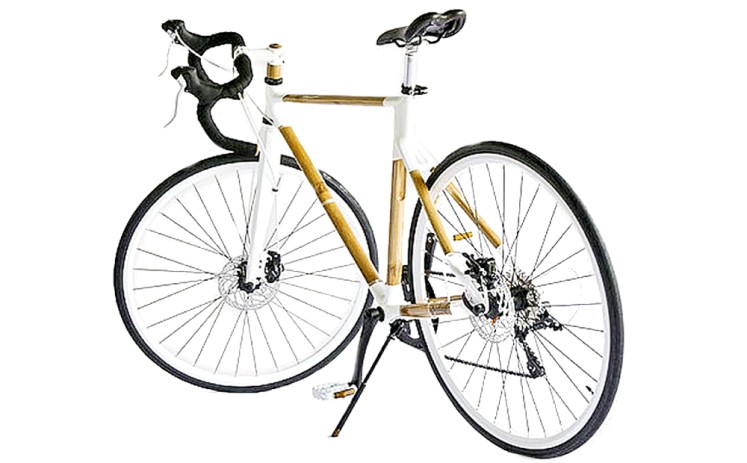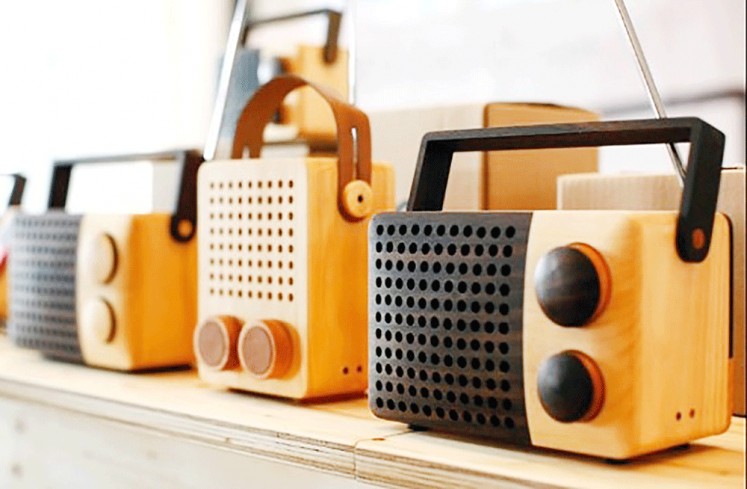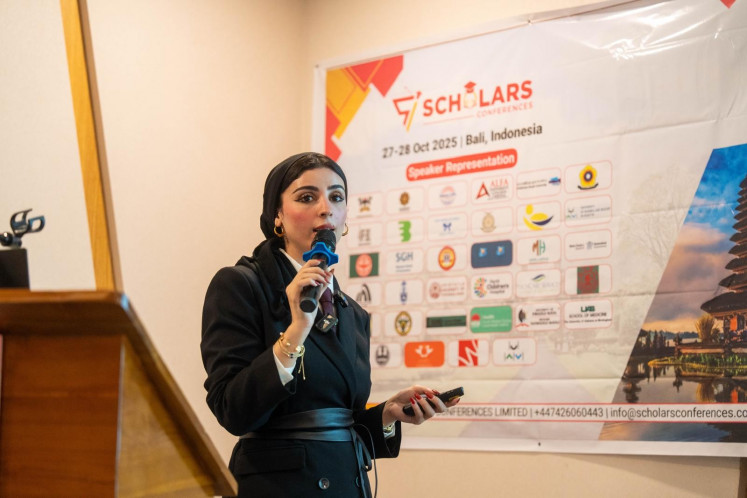Popular Reads
Top Results
Can't find what you're looking for?
View all search resultsPopular Reads
Top Results
Can't find what you're looking for?
View all search resultsSinggih S. Kartono: From the village to the world
Living in a village does not get in the way of creativity.
Change text size
Gift Premium Articles
to Anyone
A
ward-winning product designer Singgih S. Kartono recalls his parents’ disappointment in him when he decided to work in his village of Kandangan in Temanggung, Central Java, in 1995 at the age of 27.
They thought that, as a graduate of the prestigious Bandung Institute of Technology (ITB), their son would strive to make it in the big city.
Singgih, however, held on to his belief, saying that villages across the country would never develop if they were abandoned by educated residents who preferred to pursue city careers.
He does not subscribe to the claim that cities offer more promising job opportunities than villages — and he strongly disagrees with people saying that living in villages will leave them unaware of news and trends.
“One of the things that motivated me to return home is a book by American writer Alvin Toffler, who says there will be a moment when many people work in remote places but are still connected to the world, thanks to the development of technology and communication,” said the 50-year-old.
The creator of the Spedagi bamboo bike — the name of which derives from the words sepeda (bike) and pagi (morning) — recently celebrated the country’s Independence Day in Jakarta by cycling with other Spedagi bikers from the Sudirman Central Business District via the National Monument and Lapangan Banteng to the Menteng area.
“Through the ride, we want to show people that designers can make cool products even though they live in a village,” Singgih said, adding that the Spedagi bike had existed since 2013.
Take your pick: A woman shows off Singgih’s works, which were on display during an event in Jakarta. (-/A Kurniawan Ulung)The idea for a bamboo bicycle came to Singgih when he was sick. When browsing the internet to look for a suitable exercise, he found information about a bamboo bicycle in the United States. He was surprised to learn that bamboo was used to build bikes in a country where the plant is rather rare.
“Aware that bamboo grows abundantly in Indonesia, it then occurred to me that we should make bamboo bikes too,” said the founder of wood products brand Magno.
Priced in the range of Rp 7 million (US$479) to Rp 11 million, the handmade Spedagi, which has won the Bronze Award at DFA Design for Asia Awards 2017, is created using bambu petung (giant bamboo), one of the strongest varieties of bamboo.
When it comes to strength, the handmade Spedagi is not inferior to a metal-made bike. It managed to travel 750 kilometers from Jakarta to Madiun in East Java with a total load of 90 kilograms without any damage. It has also passed a vibration-fatigue-impact test by the Japan Vehicle Inspection Association (JVIA).
Under a license from Singgih, bamboo bikes of the brand Spedagi Ato have also been produced in Ato village, Yamaguchi City, Japan.
“Japan faces similar problems to Indonesia, with many young talented residents leaving their villages for big cities,” he said.
Singgih feels grateful to God for blessing Temanggung with abundant bamboo trees. Like Kandangan, villages across the archipelago are rich with natural resources, but many people have yet to realize their potential.
He believes village resources will determine the world’s future.
A Spedagi bamboo bicycle. (Courtesy of Bambooina/-)“In villages, people can make ends meet independently. In Wae Rebo village in East Nusa Tenggara, for example, people fulfill their needs from nearby sources. They do not use [factory-made] products from outside the village,” said the father of two.
Ciptagelar village in Sukabumi, West Java, known for producing rice, is no different. There, rice is considered so precious that people will consume it for their needs only and will not sell it to people from other villages. “That is why there is never any hunger in Ciptagelar,” Singgih said.
Another benefit of living in a village is the strong sense of togetherness among people, something that is hard to come by in cities.
Singgih admits he still finds it challenging to convince young, educated people to go home to develop their villages. He tells them about the Spedagi success story to inspire them.
His effort is showing some results. Ngadiprono village in Temanggung, for example, has a group of young educated residents who decided to return after completing their studies in big cities.
One of their major contributions is transforming a bamboo garden into a child-friendly green space equipped with a library and a playground. There, children like to play traditional games like gasing (spinning toys) and bamboo copter.
Before the youngsters came, the bamboo area was smelly and dirty, because the locals would use it as a landfill. “[At the time], they did not realize that bamboo trees were a [valuable] resource for the village. They did not know that in developed countries, bamboo was used as a substitute for wood,” Singgih said.
On certain Sundays based on the Javanese calendar, villagers use the green space to hold the Papringan Market, which has attracted almost 4,000 visitors, including from the nearby cities of Yogyakarta and Magelang.
Award-winning design: The wooden Magno radios were designed by Singgih as a final project while studying at the Bandung Institute of Technology. (Courtesy of designyatra.com/-)Some 100 households from Ngadiprono flock to the market to sell many things, from handicraft to organic food typical of Temanggung, such as Sego Gono, a type of rice cooked with coconut and served with fermented tempeh, long bean leaves and anchovy.
“The food is not only healthy, but also eco-friendly, because it is not covered in plastic wrapping that hardly decomposes,” Singgih said.
From Nov. 22 to 25 this year, Singgih plans to hold the 3rd International Conference on Village Revitalization (ICVR) in Ngadimulyo village. Two years ago, the conference took place in the village of Ato in Yamaguchi, Japan.
“We want to show that even an international conference can be held in a village. This event aims to attract young people not only from Indonesia but also from other countries to discuss the global importance of villages for the future.”

